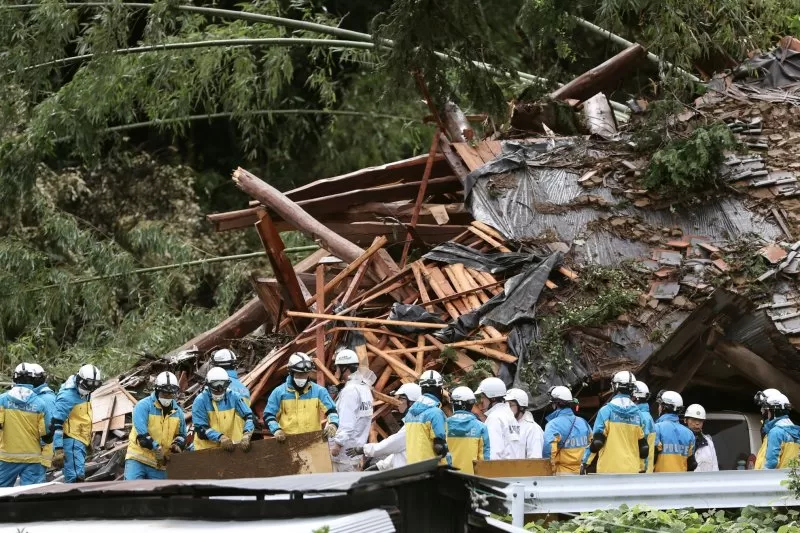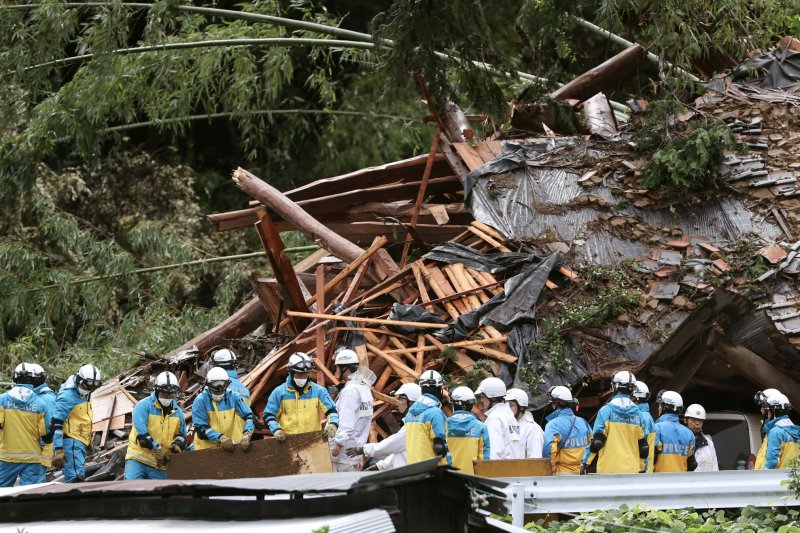Rescue workers search for missing residents amid the ruins of a house collapsed due to heavy rain triggered by typhoon Shanshan in Gamagori, Aichi Prefecture, central Japan on Thursday. Two of the five-member family buried by the landslide were rescued. Photo by Jiji Press/EPA-EFE
Sept. 1 (UPI) — Typhoon Shanshan weakened to a tropical storm Sunday after the storm was nearly stationary off the Pacific coast of central Japan.
The depression, referred to as Typhoon No. 10 by the Meteorological Agency, is still impacting are3as hundreds of miles from its center.
At least seven people died as a result of weather brought by the typhoon, which made landfall on the country’s southwestern main island of Kyushu on Thursday.
Deaths were caused by a landslide, a house collapse and other incidents, according to the Fire and Disaster Management Agency and local governments.
More than 120 people have been injured, with more than 1,000 homes damaged due to gusts of wind and flooding.
Many parts of the country experienced record amounts of rain.
In the 72 hours leading up to 6 a.m. Sunday, the city of Atami in Shizuoka Prefecture recorded 25 inches of rain, more than three times its average for the entire month of August.
Due to humid air brought by the typhoon, many parts of the country experienced record amounts of rain.
Up to 12 inches of rainfall is expected in places in the next 24 hours.
The agency warned residents to be wary of landslides and overflowing rivers.
“When it comes to rain, being far from the typhoon’s center doesn’t mean you’re safe,” professor Motoyuki Ushiyama, an expert at Shizuoka Universityon evacuation behavior during disasters, told NHK. “Even (after) the storm weakens into a tropical depression, the threat of heavy rainfall and potential disasters remains.”
Japanese bullet trains were canceled Saturday as the storm moved across Shikoku, the smallest of Japan’s four major islands.
Tokaido Shinkansen bullet trains restarted operations Sunday between Tokyo and the western city of Osaka, according to operator JR Central.
All Nippon Airways and Japan Airlines canceled dozens of domestic flights.

